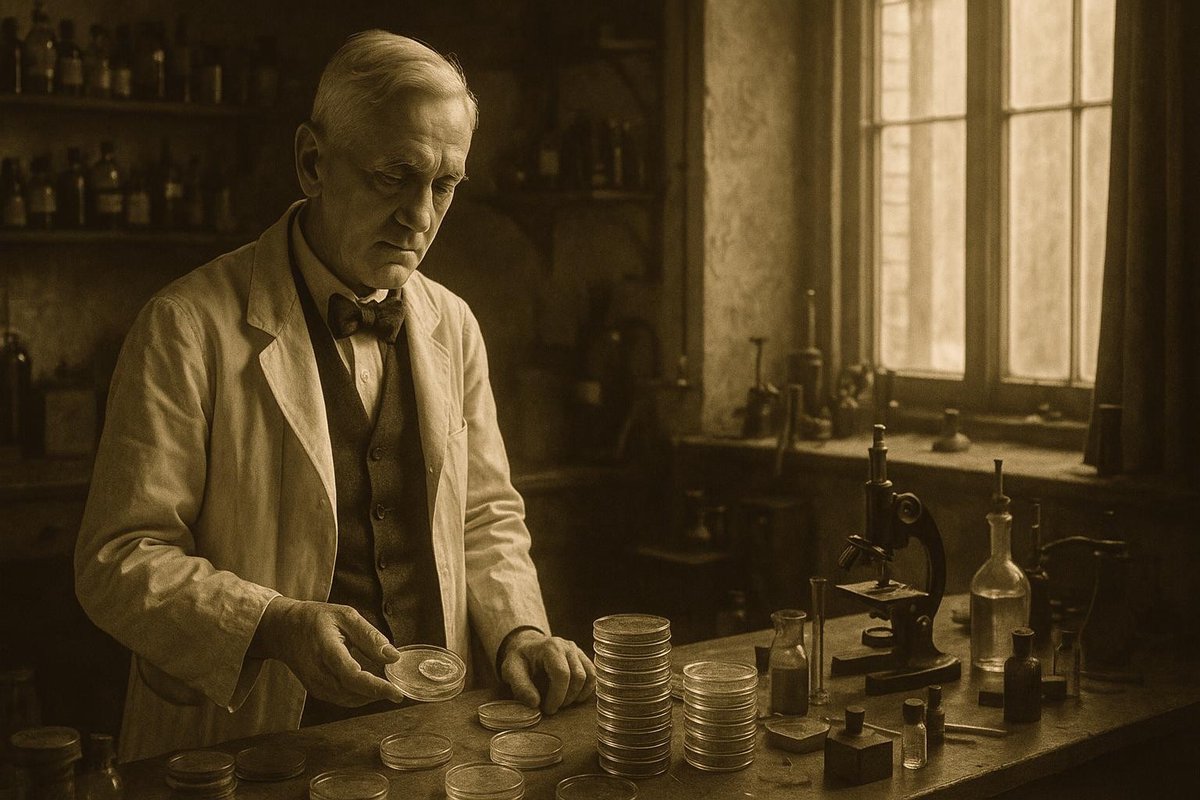
Introduction
Imagine a world where even a minor infection could be a death sentence. Such was life in the early 20th century until a serendipitous discovery changed everything. Alexander Fleming, a Scottish bacteriologist, forever transformed medicine with just a moldy petri dish. How did this serendipitous event unfold? Let’s dive into this scientific detective story that reshaped the world.
Origin of the Discovery
In 1928, Alexander Fleming had returned to his laboratory at St. Mary’s Hospital in London after a two-week vacation. To his surprise, he noticed something unusual growing on one of his petri dishes. A spot of mold seemed to have annihilated the surrounding bacteria. This wasn’t just any mold; it was Penicillium notatum, and its presence would lead to a scientific revolution.
- Before penicillin, there were no effective treatments for bacterial infections.
- Many infections that are now trivial were once life-threatening.
- Fleming’s lab was known for its research on staphylococci bacteria.
Interestingly, Fleming himself was no stranger to the power of chance in research, believing that “one sometimes finds what one is not looking for.” His laboratory was a testament to meticulous observation, making it fertile ground for such discoveries. No wonder this errant mold caught his trained eye.
Key Figures in the Story
While Fleming’s initial discovery was crucial, the realization of penicillin’s potential required more than one pair of hands. Howard Florey and Ernst Boris Chain, two scientists from Oxford University, played a pivotal role in transforming penicillin from a laboratory curiosity to a lifesaving drug.
- Fleming’s work laid the foundation, but it was Florey and Chain who scaled up production.
- These scientists worked under the shadow of World War II.
- Their work led to mass production techniques that were critical during wartime.
Florey and Chain’s methodical validation efforts in the 1940s proved penicillin’s effectiveness on a large scale. This collaboration across borders and disciplines underscores the importance of teamwork in science, turning Fleming’s discovery into a global phenomenon.
Turning Point: From Laboratory to Life-Saver
The real turning point came when penicillin was successfully mass-produced. During World War II, the Allies needed a solution to the infections that were claiming soldiers’ lives. The large-scale production of penicillin by 1944 marked a new era in medical treatment.
- The pharmaceutical company Pfizer played a key role in industrial production.
- By the end of the war, penicillin was widely available, drastically reducing infection-related deaths.
- Penicillin was hailed as a miracle drug, saving countless lives on the battlefield and in civilian life.
This was a testament to human ingenuity and the power of scientific collaboration. Of course, the path wasn’t entirely smooth, but the results were undeniably transformative. Antibiotics had arrived, changing medicine forever.
Impact on the World
The impact of penicillin on global health was immediate and profound. Diseases that once required amputations were now treatable with a simple dose of antibiotics. Life expectancy began to rise as infectious diseases became manageable.
- Penicillin’s discovery marked the beginning of the antibiotic era.
- It paved the way for the development of more antibiotics and treatments.
- The medical field was revolutionized, altering public health practices worldwide.
No longer were people at the mercy of bacterial infections that had claimed so many lives. As time goes on, the legacy of penicillin continues to be felt in every corner of the globe, reminding us of the power of science to solve humanity’s greatest challenges.
Conclusion
From an unexpected moldy petri dish to a world-changing breakthrough, the story of penicillin is a testament to the power of curiosity and collaboration. Alexander Fleming’s accidental observation, followed by methodical validation, ushered in an era where infection no longer ruled unchecked. The lessons from this discovery continue to inspire scientists to remain observant and collaborative in their pursuits, ever ready for the next serendipitous moment.
Fuel Someone Else’s Curiosity
If you found this story intriguing, why not share it with a friend? You never know whose curiosity you might ignite. Together, we can celebrate the wonders of science and the profound impact of those who dare to explore.

Leave a Reply